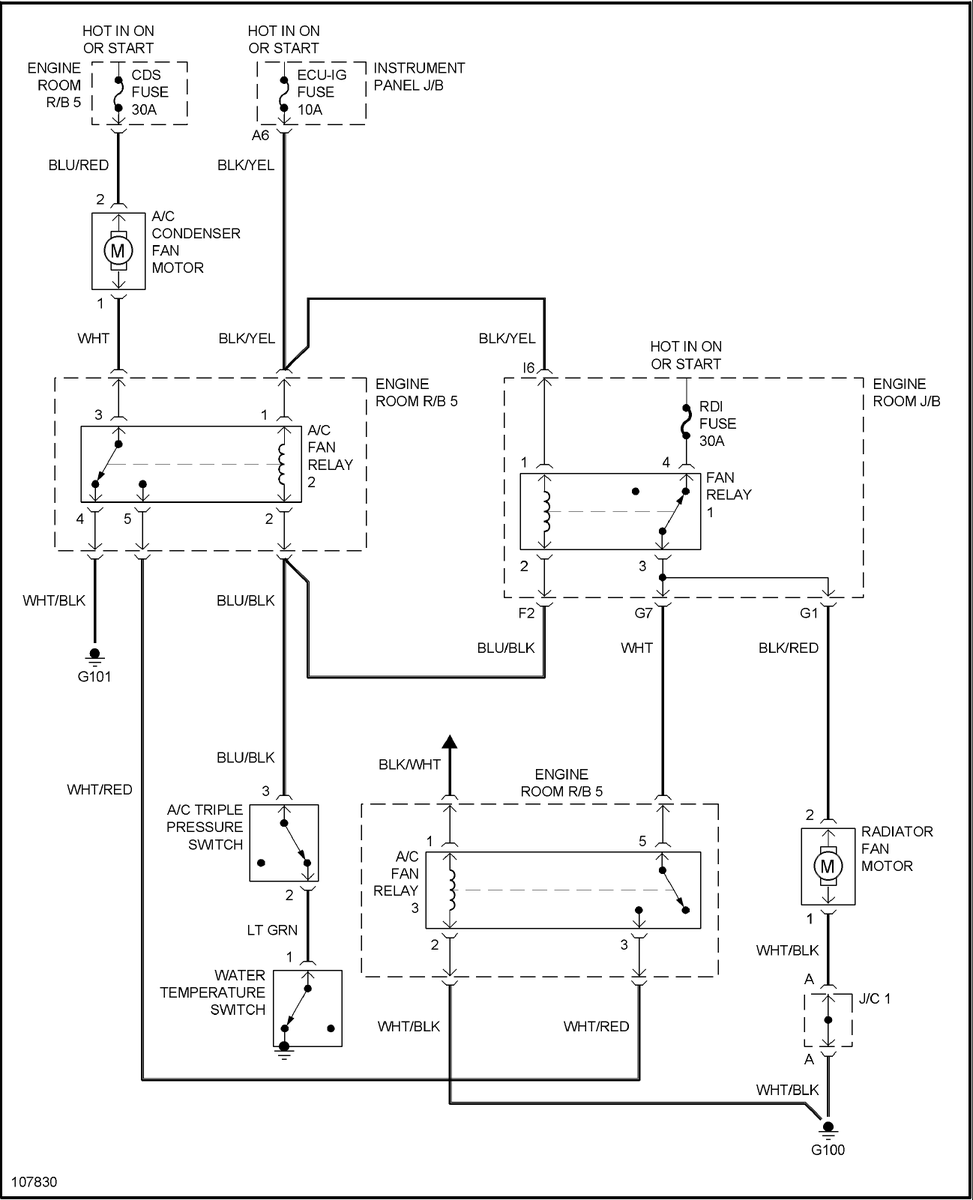Is your car’s cooling fan starting as soon as you turn the ignition? This can be puzzling and often concerning.
Understanding why this happens is key to maintaining your car’s health and performance. When a car’s cooling fan activates with the ignition, it usually indicates a system issue. This could be due to a sensor malfunction, wiring problems, or a more serious engine cooling challenge.
Knowing the reasons behind this behavior can help you address any potential issues early. A functioning cooling system is vital for your car’s engine. It prevents overheating and ensures smooth operation. In this blog post, we will explore the common causes and solutions for a cooling fan that comes on with the ignition. Stay with us to learn how to keep your vehicle in top shape.
Common Causes
When your car’s cooling fan comes on with the ignition, it can be confusing. Understanding the common causes helps in diagnosing the issue. Here, we will explore two primary reasons for this problem.
Faulty Temperature Sensor
A faulty temperature sensor can trigger the cooling fan. This sensor monitors the engine’s temperature. When it malfunctions, it may send incorrect signals. These signals can activate the fan even when the engine is cool.
Symptoms of a bad temperature sensor include:
- Erratic temperature readings
- Check engine light
- Poor fuel efficiency
Replacing the sensor is often the solution. Regular checks can prevent this issue.
Cooling Fan Relay Issues
The cooling fan relay controls the fan’s operation. If this relay fails, the fan can run continuously. This can happen even with the ignition on.
Common signs of a bad relay include:
- Fan running non-stop
- Overheating engine
- Electrical burning smell
A bad relay can be tested and replaced. It is a simple fix that ensures the fan operates correctly.
Understanding these causes is crucial. It helps in taking quick action and prevents further damage.
Diagnosing Electrical Problems
Experiencing a cooling fan that activates with ignition can be perplexing. Addressing this issue often requires diagnosing electrical problems. Thorough checks can pinpoint the fault. This section will explore key steps in diagnosing electrical problems related to cooling fans.
Checking Wiring Connections
Begin by inspecting the wiring connections. Loose or corroded connections might cause the fan to run with the ignition. Examine the wires leading to the fan. Look for signs of wear or damage. Secure any loose connections. Clean corroded terminals with a wire brush.
Ensure all connectors fit snugly. Faulty connections can lead to electrical shorts. This could trigger the fan unnecessarily. Using a multimeter, check for continuity. This will help identify broken or damaged wires. A stable connection should show consistent readings.
Testing The Fan Motor
Next, test the fan motor. A malfunctioning motor might activate with the ignition. Disconnect the fan motor from its power source. Use a 12V battery to test the motor directly. Connect the battery to the motor terminals. Observe if the fan runs smoothly.
If the fan does not run, the motor may be faulty. Replace it if necessary. Listen for unusual noises. Clicking or grinding sounds indicate motor issues. Check the fan blades for obstruction. Clear any debris that might hinder movement.
These diagnostic steps can help resolve electrical problems. Ensuring proper wiring and motor function is crucial. It helps maintain the cooling system’s efficiency.
Examining The Engine Control Unit
Investigating the Engine Control Unit can reveal why the cooling fan activates with the ignition. This issue often points to a faulty sensor or wiring problem.
When the cooling fan comes on with ignition, the issue could be with the Engine Control Unit (ECU). The ECU is the brain of your vehicle. It controls various functions, including the cooling fan. Any problems here can lead to the fan running unexpectedly. Let’s dive into the details.Ecu Malfunctions
ECU malfunctions can cause the cooling fan to activate early. The ECU may send wrong signals. This can happen due to faulty wiring or sensors. A damaged ECU can lead to the fan running with ignition. Regular checks can help identify such issues.Software Glitches
Software glitches in the ECU can also be a culprit. These glitches can cause erratic behavior of the cooling fan. Sometimes, an update or reprogramming might be needed. A professional can diagnose and fix these software issues. Keeping the software up-to-date can prevent such problems. “`Thermostat Problems
The thermostat plays a critical role in your vehicle’s cooling system. It regulates the engine temperature. Problems with the thermostat can cause the cooling fan to run with ignition. Understanding these issues helps in troubleshooting.
Stuck Thermostat
A stuck thermostat can cause the cooling fan to run continuously. This happens because the thermostat fails to open or close. When stuck open, the engine remains cool. This triggers the cooling fan to run unnecessarily. If stuck closed, the engine overheats. The fan runs excessively to cool down the engine. Checking the thermostat’s functionality is essential.
Incorrect Thermostat Installation
Incorrect installation of the thermostat can lead to similar issues. If the thermostat is not installed properly, it won’t regulate the temperature correctly. This can cause the cooling fan to run with ignition. Proper installation ensures that the thermostat operates smoothly. Always follow the manufacturer’s instructions. Verify the thermostat’s position after installation.
Inspecting The Coolant System
When the cooling fan comes on with ignition, it’s crucial to inspect the coolant system. This ensures the engine stays cool and functions properly. A malfunctioning coolant system can lead to overheating and severe engine damage.
Low Coolant Levels
Low coolant levels can trigger the cooling fan. Check the coolant reservoir. Ensure it’s filled to the recommended level. A table can help you understand the symptoms and solutions:
| Symptom | Solution |
|---|---|
| Frequent overheating | Refill coolant |
| Cooling fan activates early | Check and fill coolant |
Coolant Leaks
Coolant leaks can also cause the cooling fan to come on with ignition. Inspect the coolant system for leaks. Use these steps:
- Look for puddles under the car
- Check hoses for cracks
- Inspect the radiator and water pump
If you find a leak, repair it immediately. Leaks reduce coolant levels, leading to overheating. To prevent further issues, ensure regular maintenance.
By inspecting the coolant system, you ensure your car runs smoothly and avoids overheating. Always check for low coolant levels and possible leaks.

Credit: www.cargurus.com
Fan Control Module Issues
The fan control module is crucial for maintaining the engine’s temperature. If the cooling fan comes on when you turn the ignition, the control module might be faulty. This part regulates the fan’s operations. Problems with it can lead to several issues.
Damaged Control Module
A damaged control module can cause the fan to run continuously. This happens if the module fails to send the correct signals. You might notice your engine overheating or the fan running nonstop.
Signs of a damaged module include:
- The fan starts with the ignition.
- Intermittent fan operation.
- Engine temperature fluctuations.
Wiring Harness Problems
The wiring harness connects the control module to the fan. If there are issues with the wiring, the fan might turn on unexpectedly. Damaged wires or loose connections are common problems.
Check for:
- Frayed or broken wires.
- Loose connectors.
- Corrosion on connectors.
Ensuring the wiring harness is intact can solve many fan operation issues.
Preventive Maintenance Tips
Maintaining your car’s cooling fan system is essential. It ensures your engine stays cool and runs smoothly. Regular checks can prevent unexpected issues. Follow these simple tips for a hassle-free experience.
Regular Coolant Checks
Check your coolant levels often. Low coolant can cause the fan to run with ignition. Inspect the reservoir and fill it to the recommended level. Also, use the correct type of coolant for your vehicle. Replace old or contaminated coolant. This ensures proper cooling and prevents overheating.
Routine Electrical System Inspections
Inspect the electrical system regularly. Loose or damaged wires can cause the fan to run continuously. Check the fan relay and fuses. Replace any faulty components. Ensure all connections are secure. A well-maintained electrical system keeps the fan operating correctly.

Credit: www.youtube.com
When To Seek Professional Help
A cooling fan that comes on with the ignition can be a sign of underlying issues. While some problems may be easy to fix, others require professional expertise. Knowing when to seek professional help can save time and prevent further damage.
Persistent Issues
Persistent issues with the cooling fan should not be ignored. If the fan continues to run even after the engine is turned off, it may indicate a deeper problem. This can lead to battery drain and overheating.
Regularly check for signs like unusual noises or frequent overheating. If the problem persists despite your efforts, it is time to consult a professional. A trained technician can diagnose and fix the issue accurately.
Complex Electrical Faults
Complex electrical faults are another reason to seek professional help. The cooling fan system involves various components, including sensors, relays, and wiring. Troubleshooting these parts can be challenging without the right tools and knowledge.
Incorrect handling of electrical faults can cause more damage and safety risks. Professionals have the expertise to identify and repair electrical issues effectively. They can also ensure that the cooling fan operates correctly without causing further problems.
Common Signs of Complex Electrical Faults
| Signs | Description |
|---|---|
| Intermittent Fan Operation | The fan starts and stops randomly. |
| Blown Fuses | Frequent blown fuses can indicate electrical issues. |
| Faulty Sensors | Incorrect readings from temperature sensors. |

Credit: www.cargurus.com
Frequently Asked Questions
Why Does The Cooling Fan Come On With Ignition?
The cooling fan can start with ignition to prevent engine overheating and maintain optimal temperature.
Is It Normal For The Fan To Run With Ignition?
Yes, it’s normal. It ensures your engine stays cool, especially after recent use.
Can A Faulty Sensor Cause The Fan To Run Early?
Yes, a faulty temperature sensor may trigger the fan prematurely. Consider getting it checked.
How Can I Stop The Cooling Fan From Starting With Ignition?
Check the fan relay and temperature sensor. Replace them if necessary to fix the issue.
Will Running The Fan With Ignition Drain The Battery?
It can drain the battery if the fan runs excessively. Regular checks can prevent this.
Conclusion
To sum up, a cooling fan turning on with ignition often signals an issue. Regular checks can prevent bigger problems. Pay attention to your vehicle’s cooling system. Addressing these signs early can save you money. Maintenance keeps your car running smoothly.
If unsure, consult a trusted mechanic. Stay proactive and keep your car in top shape. Your vehicle’s health depends on it. Safe driving!

















